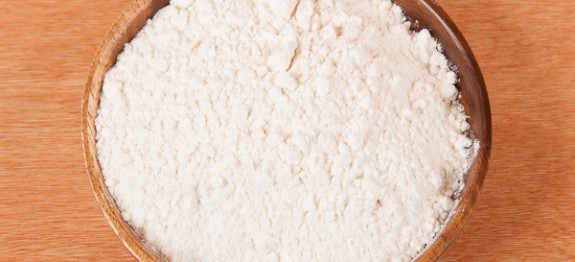About Wheat Flours
Most Americans think of refined wheat flour when they hear the word flour. Until very recently, refined white wheat flour was the only flour sold in most stores. That is changing. Today, Americans can buy a variety of wheat and other flours.
Flour is also milled from corn, rice, rye, and other grains. In north American and Europe, wheat flours are commonly used flour for baking cookies, cakes, muffins, and pastries.
Wheat flour has a protein that produces gluten when exposed to water and heat. Gluten gives strength and elasticity to baked goods. It is Latin for glue and literally prevents cakes, cookies, and breads from falling apart. One problem with wheat flour and gluten is celiac disease; an serious auto-immune reaction to gluten. Celiac disease affects about 1% of Americans.
Some people have gluten intolerance (sensitivity) that is not as severe as celiac disease and can be analogous to irritable bowel syndrome or lactose intolerance.
A small percentage of people are allergic to wheat. A wheat allergy can produce the same symptoms as peanut, milk, soy, and other food allergies. In severe cases, wheat allergy can be fatal.
Hard & Soft Wheat
Different types of wheat are classified as hard and soft based on the amount of protein in the wheat.
Bread flour made from hard wheat produces a superior loaf of bread, but all-purpose flour, which is a blend of hard and soft wheat, is used in many home baked bread recipes and produces good results. I sometimes use a 50/50 blend of all-purpose and bread flours when making dough for bread (focaccia) and pizza.
Protein Content
When you buy bags of wheat flour, its protein content is listed in the package’s nutrition facts label in grams.
You can estimate the percent of protein by dividing the protein in grams by the serving weight in grams. If 30 grams of all-purpose flour has 4 grams of protein the flour has about 13 percent protein. This appears to be beyond the 8% to 12% range common for all-purpose flour, but the difference can be due to rounding. What the percentage tells you is that this brand has a high protein content.
Medium protein content all-purpose flour is used almost exclusively for cookies and for some cake recipes. All-purpose flour produces good texture for high moisture cakes like carrot cake, and sweet breads like banana and zucchini. Most delicate cake recipes, like layer cakes, require cake flour.
Types of Flour
The most common types of flour available in the U.S. are bread, all-purpose, and cake flour.
Pastry flour, made from soft wheat, has a protein content between all-purpose and cake flour, and can be found in some grocers prepackaged or bulk.
If you find cakes and cinnamon rolls made with all-purpose flour consistency have a tough texture, without over-baking, you can try substituting prepared or the homemade pastry flour listed below.
All-purpose Flour
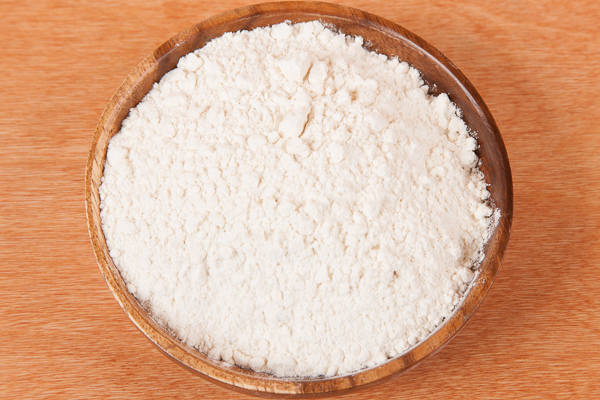
All-purpose flour is a blend of hard and soft wheat flours with protein content between 8%-12%. It can be bleached or unbleached and used interchangeable. Bleached flour is treated with whiting agents to give it a whiter color compared to the yellowish color of unbleached flour. Most professional bakers prefer unbleached flour. If you prefer minimally processed foods, buy unbleached flour.
All-purpose flour is used to make cakes, cookies, breads, and pastries.
Cake Flour
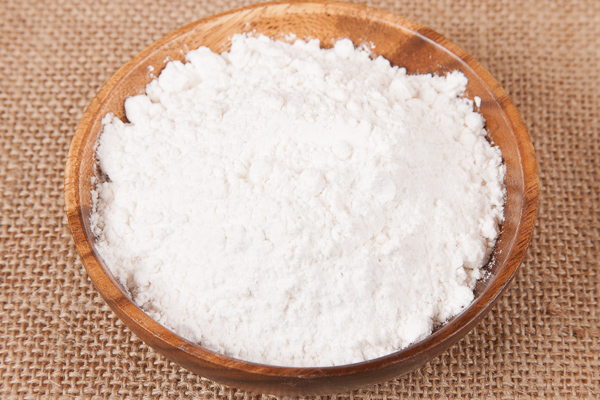
Cake flour is made from soft wheat and has a protein content between 6% and 10%. Cake flour gives cakes a tender crumb and can be used in some cookie recipes for a lighter texture. It is usually bleached to give it a bright white color ideal for white cakes.
Substituting Cake Flour for All-Purpose Flour
Use 1 cup plus 2 tablespoons cake flour for every cup of all-purpose flour.
To Make Cake Flour
For 1 cup (100 g) sifted cake flour:
Combine 3/4 cup (85 grams) sifted bleached all-purpose flour plus 2 tablespoons (30 ml) cornstarch using a whisk or fork.
Pastry Flour
Pastry flour is made from soft wheat flour and is similar to cake flour with an 8% to 10% protein content. It is softer and has an ivory color compared to white cake flour. Use pastry flour to make pastries, pies and cookies.
Some supermarkets selling bulk flours may carry pastry flour. You can also find packaged pastry flour in some stores and on the Internet. Another option is making your own using all-purpose flour and cake flour.
To Make Pastry Flour
For 2 cups of pastry flour:
Combine 1 1/3 cups (185 grams) all-purpose flour with 2/3 cup (90 grams) cake flour using a whisk or flour sifter. Watch this short video.
Self-Rising Flour
Self-Rising flour has 8% to 9% protein and contains flour mixed with baking powder and salt. It is commonly used to make biscuits in the southern United States.
If a recipe calls for self-rising four and it is not available in your area, you can make your own by adding 1 1/2 teaspoons baking powder and 1/4 teaspoon salt per cup (140 grams) of all-purpose flour.
Bread Flour
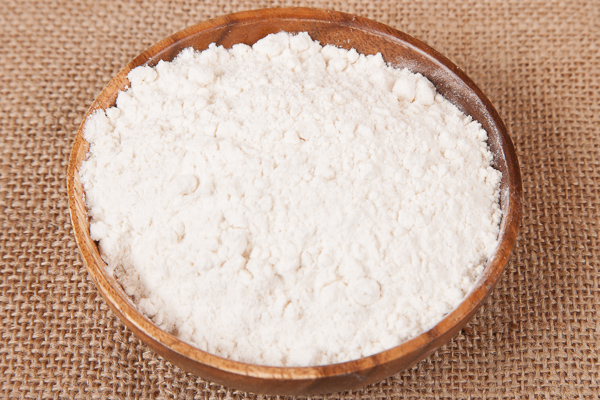
Bread flour is made from hard wheat and has a protein content between 10% and 14%. The higher gluten content compared to all-purpose flour causes bread to rise and gives bread its shape and structure. Bread flour is available in white, whole wheat, organic, bleached and unbleached. It is excellent for making most yeast breads and can be used for some pastries.
Whole Wheat Flour
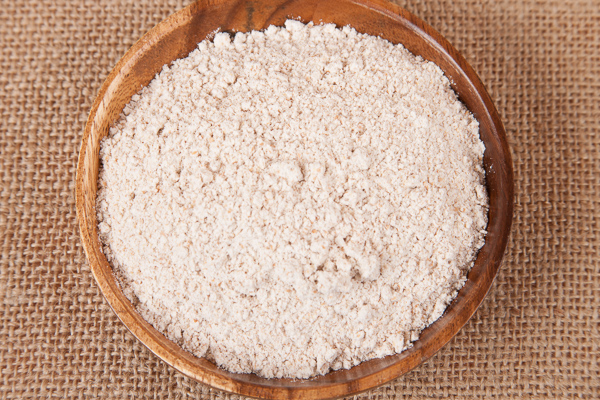
Whole wheat flour is made from the whole grain. It is much darker than all-purpose or bread flours, has a courser texture and 4 times the fiber of refined white flours. Whole wheat flour bread recipes generally use a ratio of 1 to 1 1/2 cups whole wheat flour to every 3 cups of white flour. This produces good taste, texture and slightly higher fiber content. Homemade, 100% whole wheat flour breads are usually too dense and course for the American palate. Commercial whole wheat breads use dough conditioners not available to the home baker.
Making breads and cookies using only whole wheat flour requires modifying the recipe to produce acceptable results.
Storing Flour
Today’s flours have a much longer shelf life compared to flours manufactured in the 1960’s and 70’s. Finding insects growing in your flour are rare even when stored at room temperature a year or more.
To further increase shelf life, store flour especially whole wheat flour in the refrigerator or freezer. Allow refrigerated or frozen flour to come up to room temperature before using.
Whole wheat flour contains the oil rich germ that becomes rancid when stored at room temperature. Shelf life at room temperature is typically six months or less.
Approximate Weights Per Cup of Flour
All-Purpose Flour
1 cup = 130 grams
1 cup sifted = 110 grams
Bread Flour
1 cup = 150 grams
1 cup sifted = 120 grams
Cake Flour
1 cup = 130 grams
1 cup sifted = 100 grams
Whole Wheat Flour
1 cup = 150 grams
1 cup sifted = 130 grams
For more about wheat flour, watch this short video:


